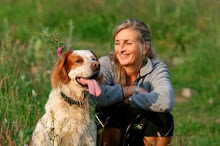 "Multum in Parvo" - a lot of dog in a small space; a particularly apt description for one of the oldest breeds of dog, the Pug.
"Multum in Parvo" - a lot of dog in a small space; a particularly apt description for one of the oldest breeds of dog, the Pug.
This endearing little fellow is thought to have originated in China around 400BC but has also been discovered in both Tibet and Japan. It eventually found its way into Europe where it quickly became the favourite of the Royal Courts.
The name "Pug" is thought to have originated from the nickname given to marmosets, a common pet in the 1700’s. It’s believed that the dogs’ facial expression was similar enough to the monkey’s to be granted its’ name.
The breed gained wide popularity throughout the Victorian era and is featured in many art forms of the period wearing either decorative collars or bows around their short, thick necks.
The head of the Pug is massive with a short, blunt, square muzzle. The eyes are large, and prominent, dark in colour with a soft expression. The body is compact and the tail curled as tightly as possible over the hip, with a double curl being considered the ultimate in perfection.
The coat is fine, soft, short and glossy and most commonly coloured in silver or apricot-fawn with velvety black ears and a clearly defined black muzzle or mask. There should be a clearly defined "thumb mark" on the forehead and a black trace down the centre of the back. Although not as common, the Pug also comes in a glossy solid black.
The Pug is an ideal pet for all ages and may be especially suitable for older folks as his exercise needs are quite moderate. It is important to ensure that the Pug is kept cool on warm days as this breed does not cope well with heat. As the Pug is very much a breed which prefers to be a house dog he will generally search out the coolest spot in the house - and certainly the most comfortable whatever the weather!
There are few more endearing dogs than the Pug. It has a natural affinity with children, craves human companionship and although he has a certain dignity about him, manages to combine it with a good sense of humour and a strong desire to be the centre of attention.
Friday, May 23, 2008
The Pug
Posted by Tamara Shardlow at 12:05 PM
Labels: dog breeds, puppies
Subscribe to:
Post Comments (Atom)







No comments:
Post a Comment